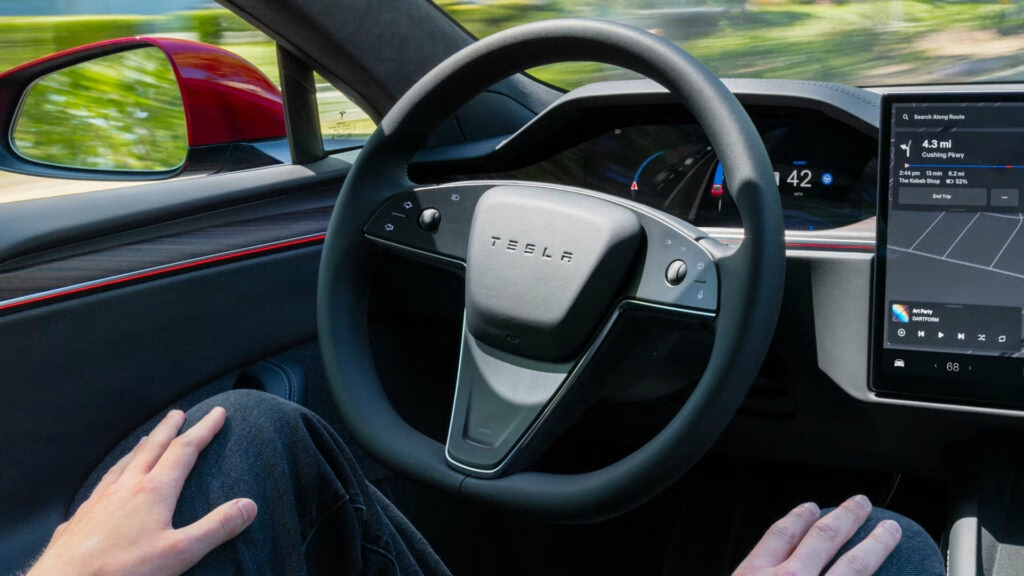What led to Tesla’s massive legal setback over Autopilot?
A Florida jury recently handed Tesla a staggering $329 million bill after a tragic 2019 crash involving a Model S and its Autopilot system. The case centered on a heartbreaking scenario: George McGee, behind the wheel of his Tesla, dropped his phone and reached down to retrieve it. He believed the car’s advanced driver assistance would keep him safe, even if he took his eyes off the road for a moment. Instead, the vehicle accelerated to over 60 mph and slammed into a parked Chevrolet Tahoe, which then struck and killed a woman, Benavides Leon, and seriously injured her boyfriend, Dillon Angulo.
The jury ultimately found Tesla 33% responsible, assigning $42.5 million in compensatory damages and a whopping $200 million in punitive damages. The verdict suggests jurors were swayed by arguments that Tesla may have overstated Autopilot’s capabilities, leading drivers to trust the system more than they should.
How did the crash actually happen—and who was really at fault?
Digging into the details, the lawsuit revealed that McGee was using a 2019 Model S equipped with Autopilot. According to court documents and reporting from CNBC, McGee thought the car would automatically brake if it detected an obstacle. But as he reached for his phone, the Tesla instead sped up, colliding with the stationary SUV. The aftermath was devastating: Angulo suffered multiple broken bones and a traumatic brain injury, while Leon lost her life.
Tesla, for its part, insists Autopilot wasn’t even engaged at the time of the crash. The company claims McGee was pressing the accelerator, which would override any driver-assist features. In a lengthy statement, Tesla argued that no car—then or now—could have prevented the crash under those circumstances. They maintain that the case was less about Autopilot’s actual performance and more about the narrative crafted by the plaintiffs’ attorneys.
Why did the jury hold Tesla partially responsible?
This is where things get complicated. The jury’s decision reflects a growing debate about how automakers market advanced driver-assistance systems. Tesla’s Autopilot, while impressive, is not a fully autonomous system. Yet, the branding and some public statements have led many drivers to overestimate what the technology can do. According to a 2023 AAA study, 22% of Americans mistakenly believe that vehicles with Autopilot can drive themselves without human intervention.
The jury appeared to agree that Tesla’s messaging played a role in McGee’s misplaced trust. By finding Tesla partially liable, they sent a clear message: automakers must be crystal clear about the limits of their technology, especially when lives are at stake.
What does this mean for Tesla and the future of self-driving cars?
The verdict’s impact could ripple far beyond Tesla. If the appeals process doesn’t go Tesla’s way, the company could face mounting legal and financial pressure—not to mention increased scrutiny from regulators and the public. The National Highway Traffic Safety Administration (NHTSA) has already opened multiple investigations into Tesla’s Autopilot and Full Self-Driving features, citing concerns about crashes and driver misuse.
Other automakers are watching closely. The outcome of this case may influence how companies market their own driver-assist technologies and how they educate consumers about safe usage. The stakes are high: a 2024 Insurance Institute for Highway Safety (IIHS) report found that partial automation systems can reduce certain types of crashes, but only when drivers remain attentive and engaged.
How can drivers protect themselves when using advanced driver-assist systems?
Here’s the bottom line: even the most advanced vehicles on the road today require active human supervision. No current system—Tesla’s included—can truly drive itself in all conditions. Experts recommend treating features like Autopilot as helpful tools, not replacements for your own attention. Always keep your hands on the wheel and your eyes on the road, no matter how tempting it is to trust the tech.
If you’re shopping for a car with driver-assist features, ask the dealer to walk you through exactly what the system can and cannot do. Read the owner’s manual. And if you’re ever unsure, err on the side of caution.
What’s the big takeaway for drivers and the auto industry?
The big takeaway? Navigating the world of self-driving tech isn’t about perfection—it’s about smarter adjustments. Start with one change this week: double-check your understanding of your car’s driver-assist features, and commit to staying engaged behind the wheel. You’ll likely spot the difference in your confidence—and your safety—by month’s end.

